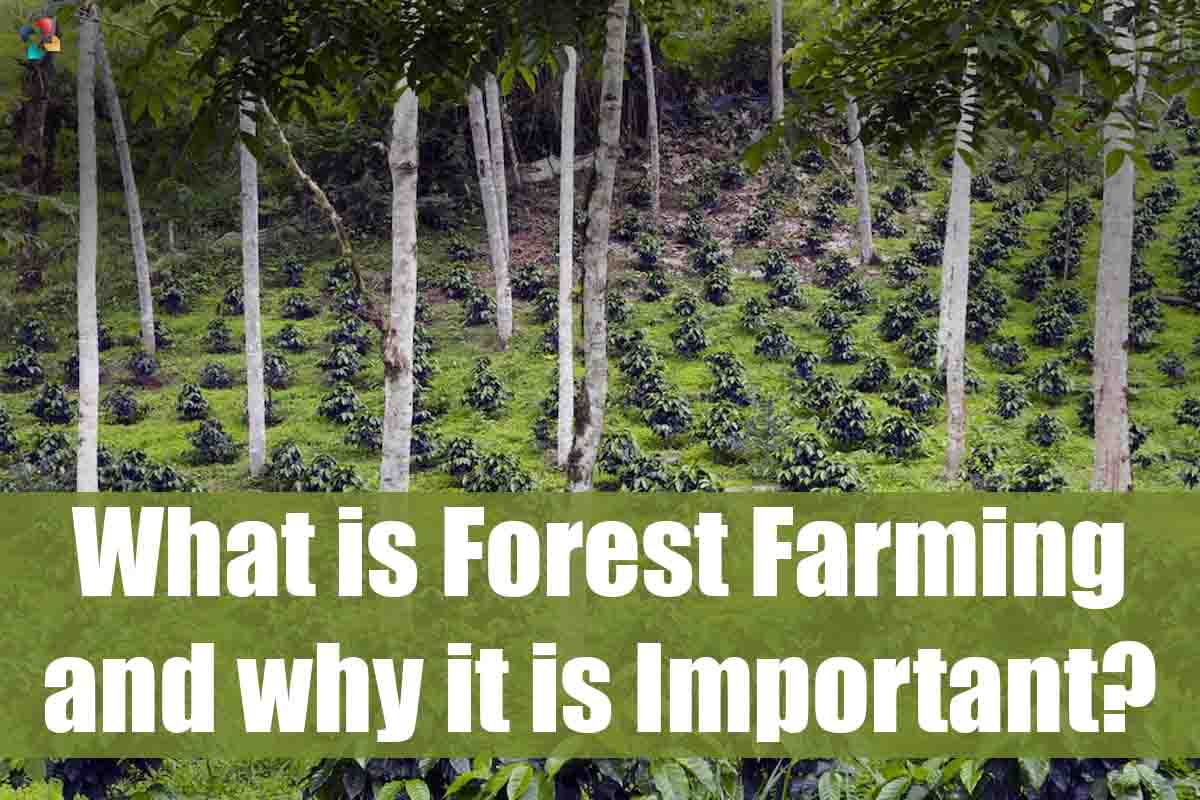Forest farming is a kind of agroforestry defined by the “four I’s”: intention, integration, intensity, and interactivity. By cultivating high-value crops beneath a forest canopy, farmers can not only improve their output levels but also preserve and enhance forest ecosystems. Thus, the importance of forest farming cannot be overstated.
The cultivation of high-value specialty crops beneath a forest canopy that has been purposefully changed or maintained to create shade levels and habitats that are favorable to growth and boost output levels is referred to as forest farming. Forest farming encompasses a wide variety of cultivated systems, including the practice of introducing plants into the understory of a timber stand and the practice of modifying forest stands in order to improve the marketability and sustainable production of plants that are already present. Both of these methods are examples of forest farming.
Forest farming is a kind of agroforestry defined by the “four I’s”: intention, integration, intensity, and interactivity. A form of land management known as agroforestry involves planting trees alongside agricultural crops or animals, or both, on the same tract of land. It places an emphasis on enhancing advantages for the landowner while also conserving the integrity of the forest and the health of the ecosystem. The cultivation of non-timber forest products or specialty crops, some of which, like ginseng or shiitake mushrooms, may have a high value on the market, is the activity that is being referred to here.
The Importance of Forest Farming in Producing Non-Timber Forest Products (NTFPs)
Plants, plant parts, fungi, and other biological elements may be collected from inside as well as on the boundaries of natural, controlled, or disturbed forests to produce what are known as non-timber forest products (NTFPs). Ginseng, shiitake mushrooms, ornamental ferns, and pine straw are some examples of crops that may be grown. Items normally fall into one of four categories: those that are culinary, medicinal, or nutritional supplements; those that are floral or ornamental; and those that are based on specialty wood.
In conclusion, recognizing the importance of forest farming can not only provide additional income streams for forest owners but also promote the cultivation of diverse plant and fungi species, improve soil health, and enhance the overall biodiversity and resilience of the forest ecosystem. If you are maintaining your forest with the end goal of harvesting wood at some point in the future, forest farming may give a supplementary income that can be earned more often while you wait for the trees to mature.
How actively you participate in forest farming is entirely up to you to decide. You have the option of either only managing the natural populations of plants, fungi, and other natural resources that currently exist in your forest, or you may develop plantations of the items that you want.
Here are the 4 Best importance of Forest Farming;
1. It has the ability to leverage short-term cash flow efficiently over a period of time.

The Importance of Forest Farming cannot be overstated. Because it combines long-term yields with short-term returns from crops, livestock, and other forest products, this method has an advantage over conventional methods of horticulture and forestry in terms of economics. Conventional methods of horticulture and forestry and horticulture focus on short-term yields. Agroforestry, in this regard, is able to leverage short-term cash flow over time more efficiently, which ultimately results in the total operation being more lucrative than it would be if the agricultural and forestry components were conducted separately.
2. It has the ability to boost agricultural yields.
According to research, crop yields in areas that are near shelterbelts have grown throughout the years. This is because of improved strategies for snow and moisture retention as well as enhanced microclimates, which allow for greater control or reduction of climatic influences that result in less harm being done to crops.
3. It contributes to the reduction of energy consumption.

Every winter, one of the most prevalent challenges that farmers confront is the loss of heat due to penetration and conduction. Yet, the quantity of energy required to heat confinement buildings will be cut down significantly as a result of the use of shelterbelts in agroforestry.
4. It has the potential to maintain or perhaps expand the amount of biodiversity.
Importance of Forest Farming is a crucial aspect of preserving energy, soil, and water, and landowners often plant trees around their properties to preserve wildlife by fostering a diverse ecosystem. Forest farming involves integrating trees into agricultural and livestock production systems, which can provide a range of economic, ecological, and social benefits.

Additionally, it is possible to return lands that were converted for settlements, which substantially decreased the amount of habitat for animals, back to their natural state by planting trees using forest farming techniques to make up for the loss. In the end, taking this step is beneficial not just for the people who own the property and the animals that live there but also for the ecology as a whole.
These are the Importance of Forest Farming.











